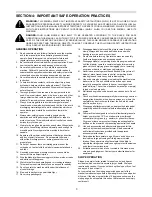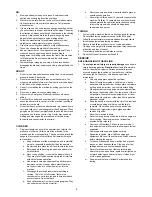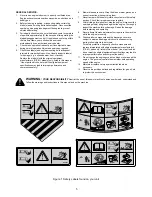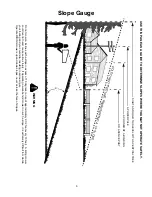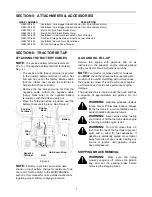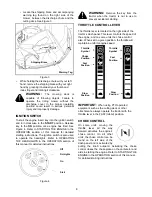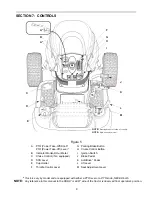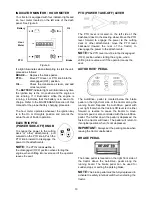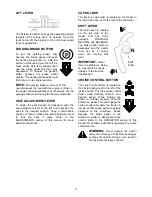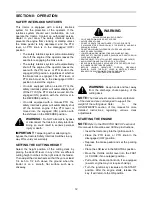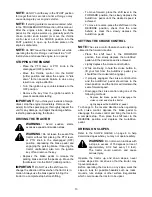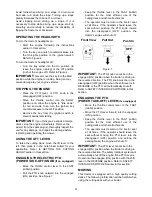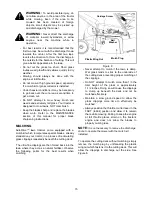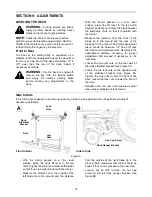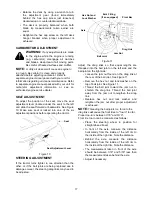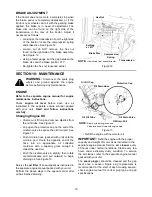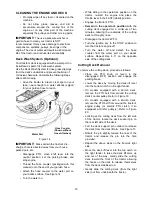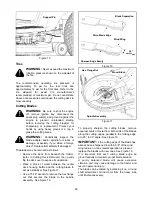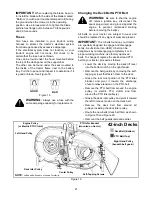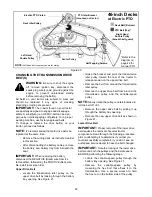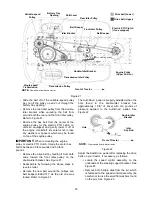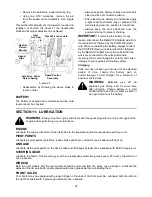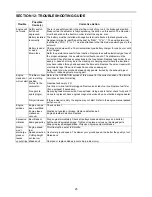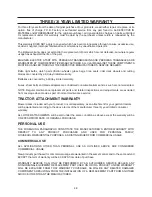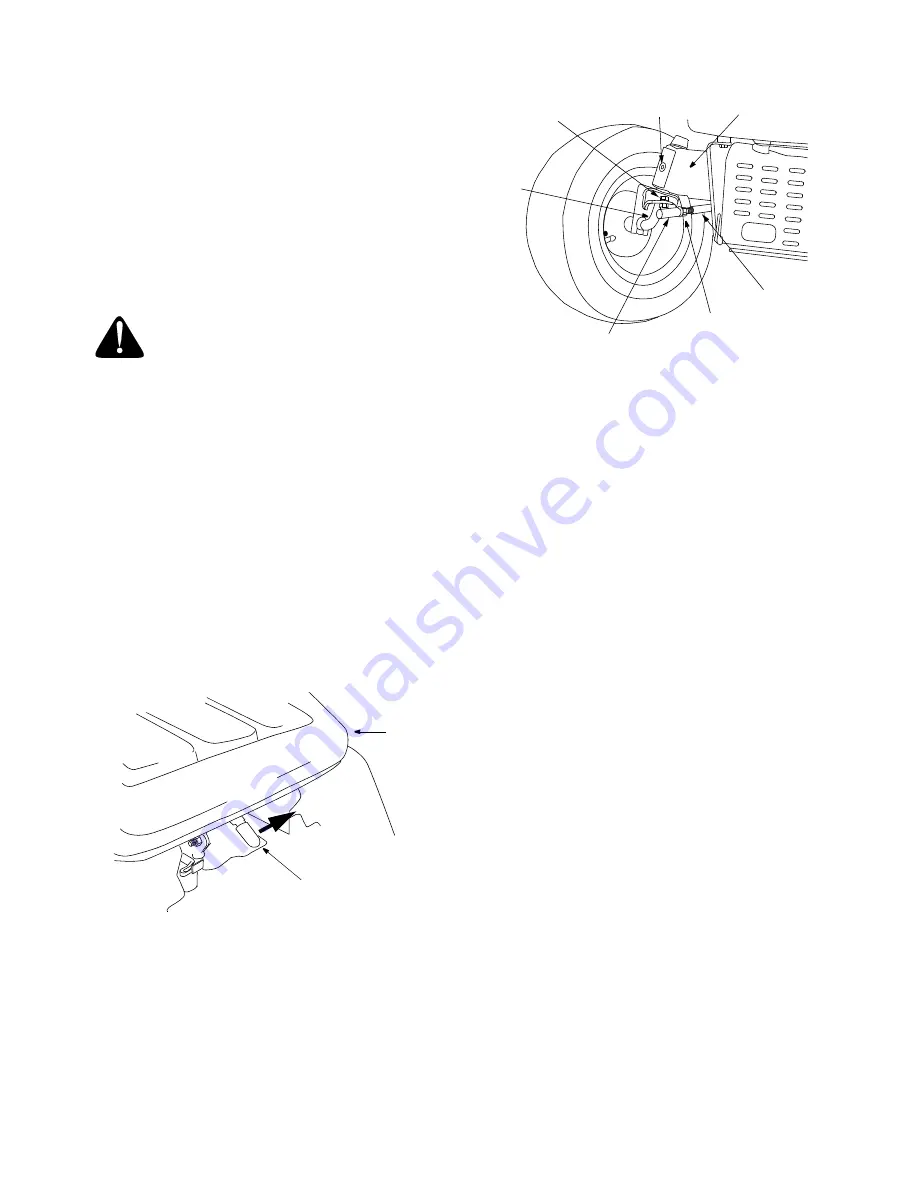
17
• Balance the deck by using a wrench to turn
the adjustment gear (found immediately
behind the hex cap screw just loosened)
clockwise/up or counterclockwise/down.
• The deck is properly balanced when both
blade tip measurements taken earlier are
equal.
• Retighten the hex cap screw on the left deck
hanger bracket when proper adjustment is
achieved.
CARBURETOR ADJUSTMENT
WARNING:
If any adjustments are made
to the engine while the engine is running
(e.g. carburetor), disengage all clutches
and blades. Keep clear of all moving parts.
Be careful of heated surfaces and muffler.
NOTE:
A dirty air cleaner will cause an engine to
run rough. Be certain it is clean and properly
attached before adjusting carburetor. Refer to
separate engine manual packed with your unit for
information regarding air cleaner maintenance. Refer
to separate engine manual packed with your unit for
carburetor adjustment information or see an
authorized engine service dealer.
SEAT ADJUSTMENT
To adjust the position of the seat, move the seat
adjustment lever (located under the seat) to the left
and slide the seat forward or backwards. See Figure
10. Make sure seat is locked into one of the six
adjustment positions before operating the tractor.
Figure 10
STEERING ADJUSTMENT
If the tractor turns tighter in one direction than the
other, or if the ball joints are being replaced due to
damage or wear, the steering drag links may need to
be adjusted.
Figure 11
Adjust the drag links so that equal lengths are
threaded into the ball joint on the left side and the
ball joint on the right side:
• Loosen the jam nut found on the drag link at
the rear of the ball joint. See Figure 11.
• Remove the hex nut and lock washer on the
top of ball joint. See Figure 11.
• Thread the ball joint toward the jam nut to
shorten the drag link. Thread the ball joint
away from the jam nut to lengthen the drag
link.
• Replace hex nut and lock washer and
retighten the jam nut after proper adjustment
is achieved.
NOTE:
Threading the ball joints too far onto the
drag links will cause the front tires to "toe-in" too far.
Proper toe-in is between 1/16" and 5/16".
Front tire toe-in can be measured as follows:
• Place the steering wheel in position for
straight ahead travel.
• In front of the axle, measure the distance
horizontally from the inside of the left rim to
the inside of the right rim. Note the distance.
• Behind the axle, measure the distance
horizontally from the inside of the left rim to
the inside of the right rim. Note the distance.
• The measurement taken in front of the axle
should be between 1/16" and 5/16" less than
the measurement taken behind the axle.
• Adjust if necessary.
Seat
Seat Adjustment Lever
Drag Link
Ball Joint
Axle
Pivot Bar
Hex Nut and
Jam Nut
Lock Washer
Zerk Fitting
(if so equipped)

